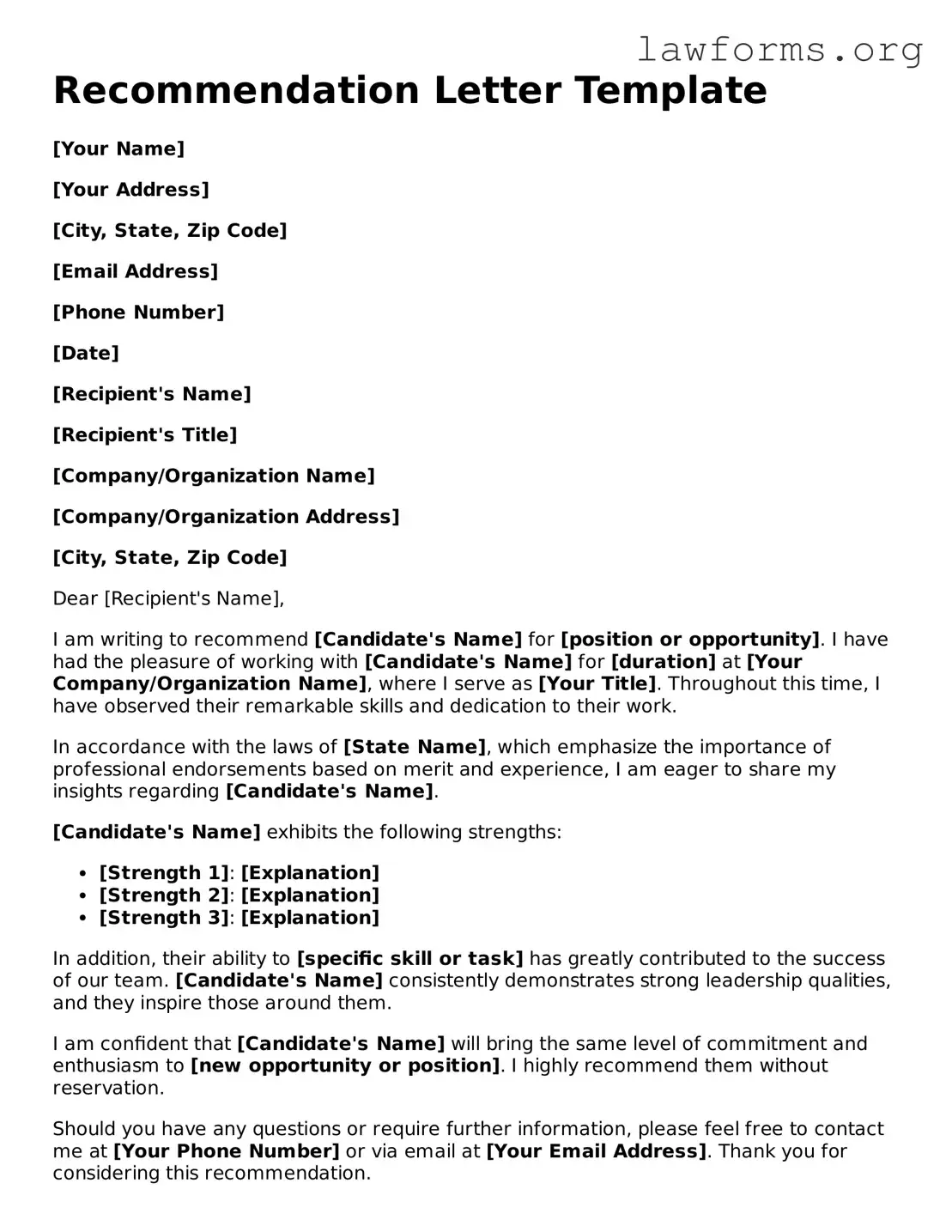Recommendation Letter Template
[Your Name]
[Your Address]
[City, State, Zip Code]
[Email Address]
[Phone Number]
[Date]
[Recipient's Name]
[Recipient's Title]
[Company/Organization Name]
[Company/Organization Address]
[City, State, Zip Code]
Dear [Recipient's Name],
I am writing to recommend [Candidate's Name] for [position or opportunity]. I have had the pleasure of working with [Candidate's Name] for [duration] at [Your Company/Organization Name], where I serve as [Your Title]. Throughout this time, I have observed their remarkable skills and dedication to their work.
In accordance with the laws of [State Name], which emphasize the importance of professional endorsements based on merit and experience, I am eager to share my insights regarding [Candidate's Name].
[Candidate's Name] exhibits the following strengths:
- [Strength 1]: [Explanation]
- [Strength 2]: [Explanation]
- [Strength 3]: [Explanation]
In addition, their ability to [specific skill or task] has greatly contributed to the success of our team. [Candidate's Name] consistently demonstrates strong leadership qualities, and they inspire those around them.
I am confident that [Candidate's Name] will bring the same level of commitment and enthusiasm to [new opportunity or position]. I highly recommend them without reservation.
Should you have any questions or require further information, please feel free to contact me at [Your Phone Number] or via email at [Your Email Address]. Thank you for considering this recommendation.
Sincerely,
[Your Name]
[Your Title]
[Your Company/Organization Name]
